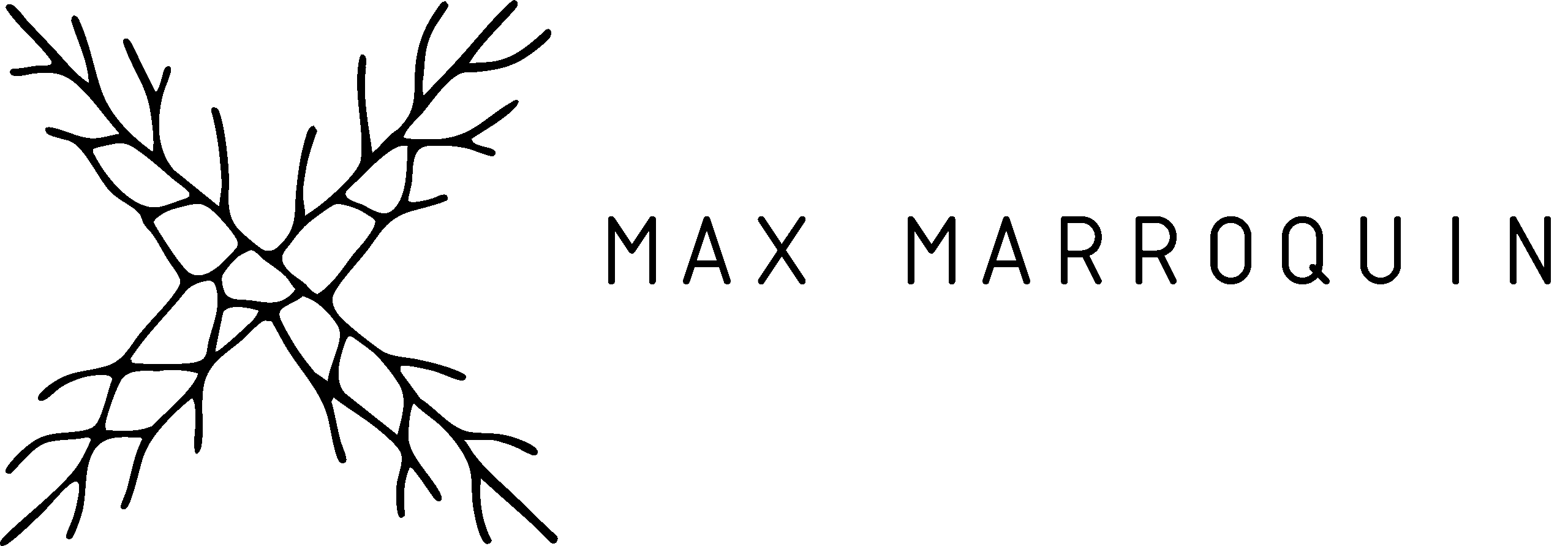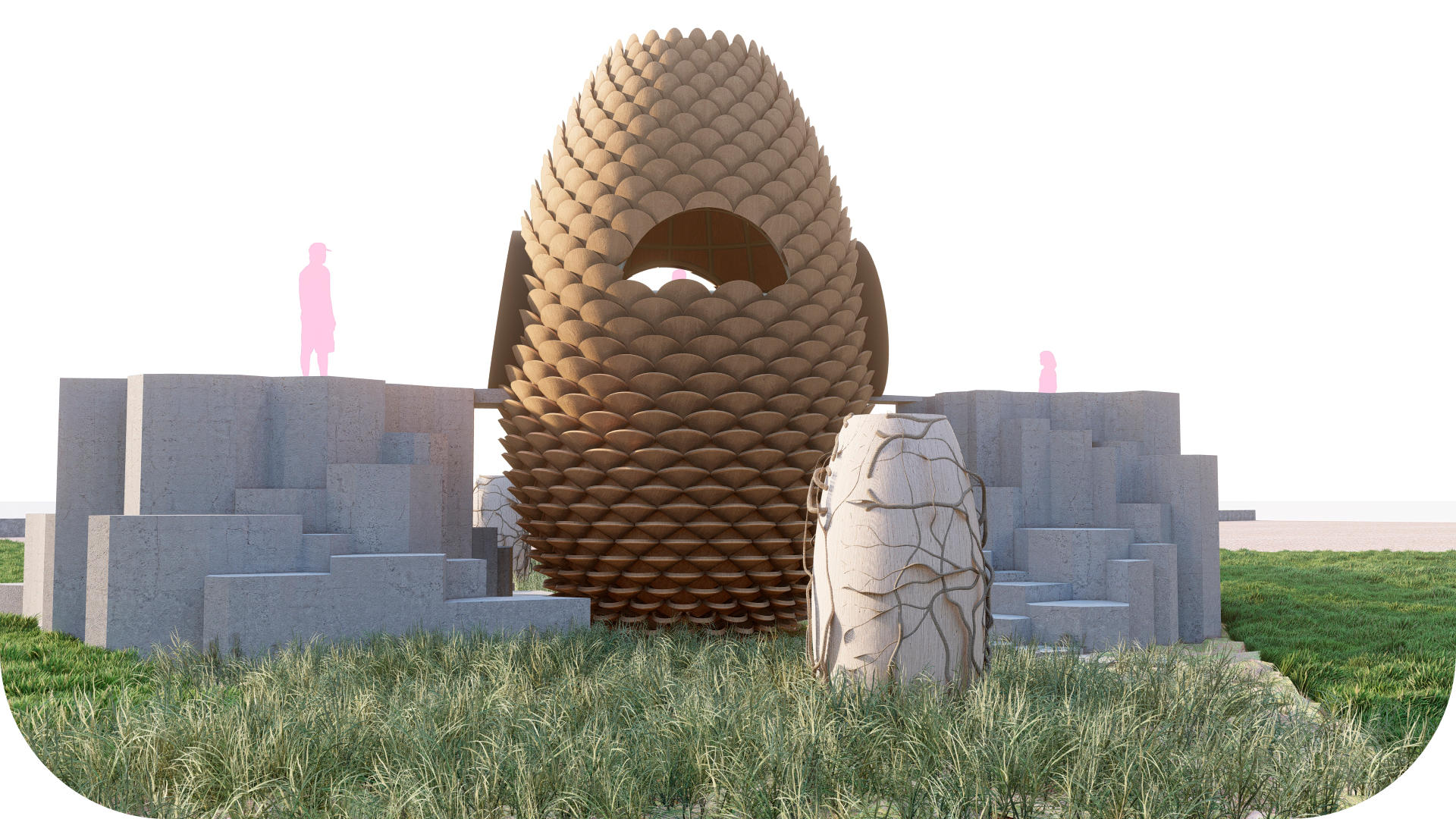
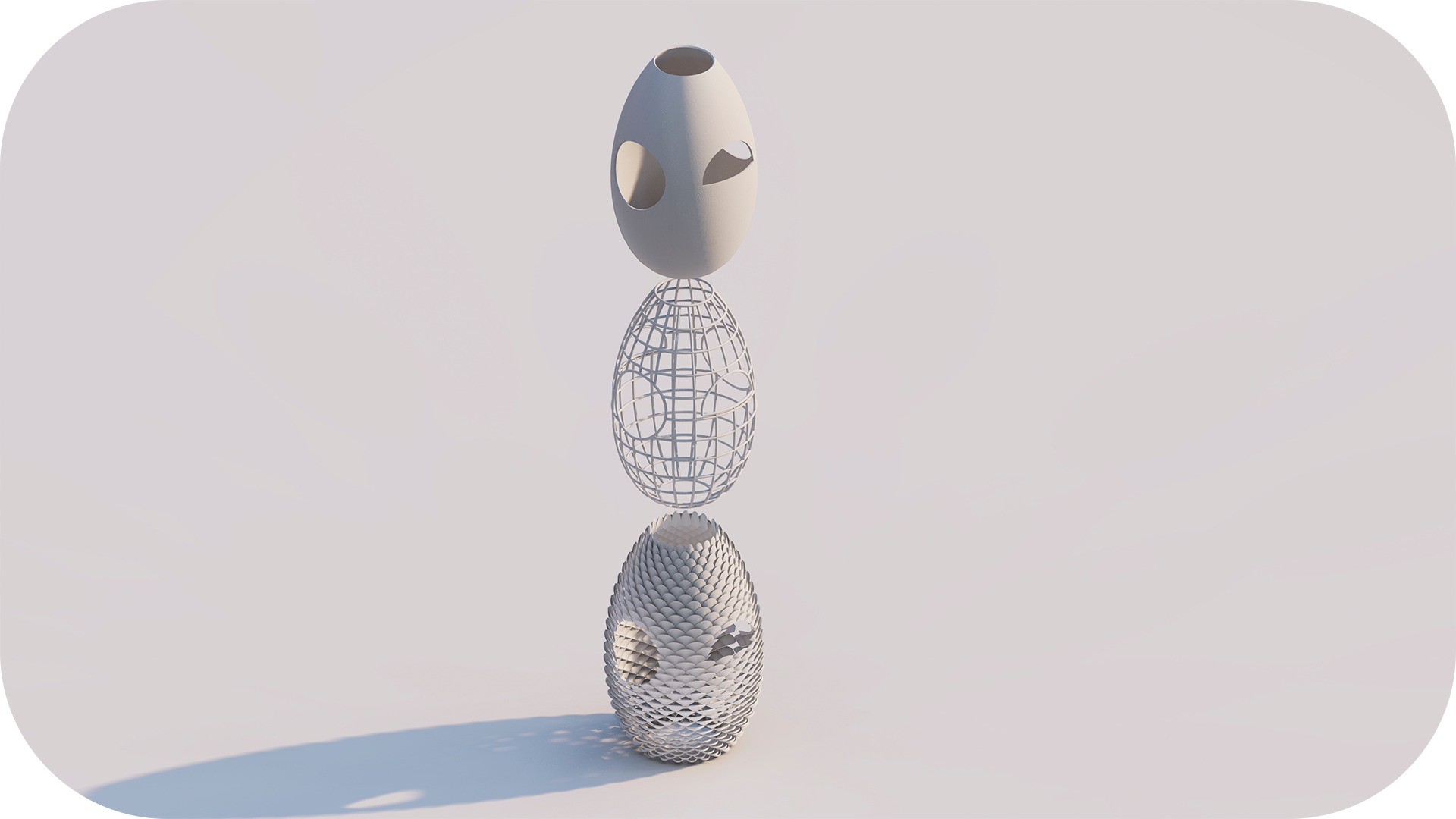
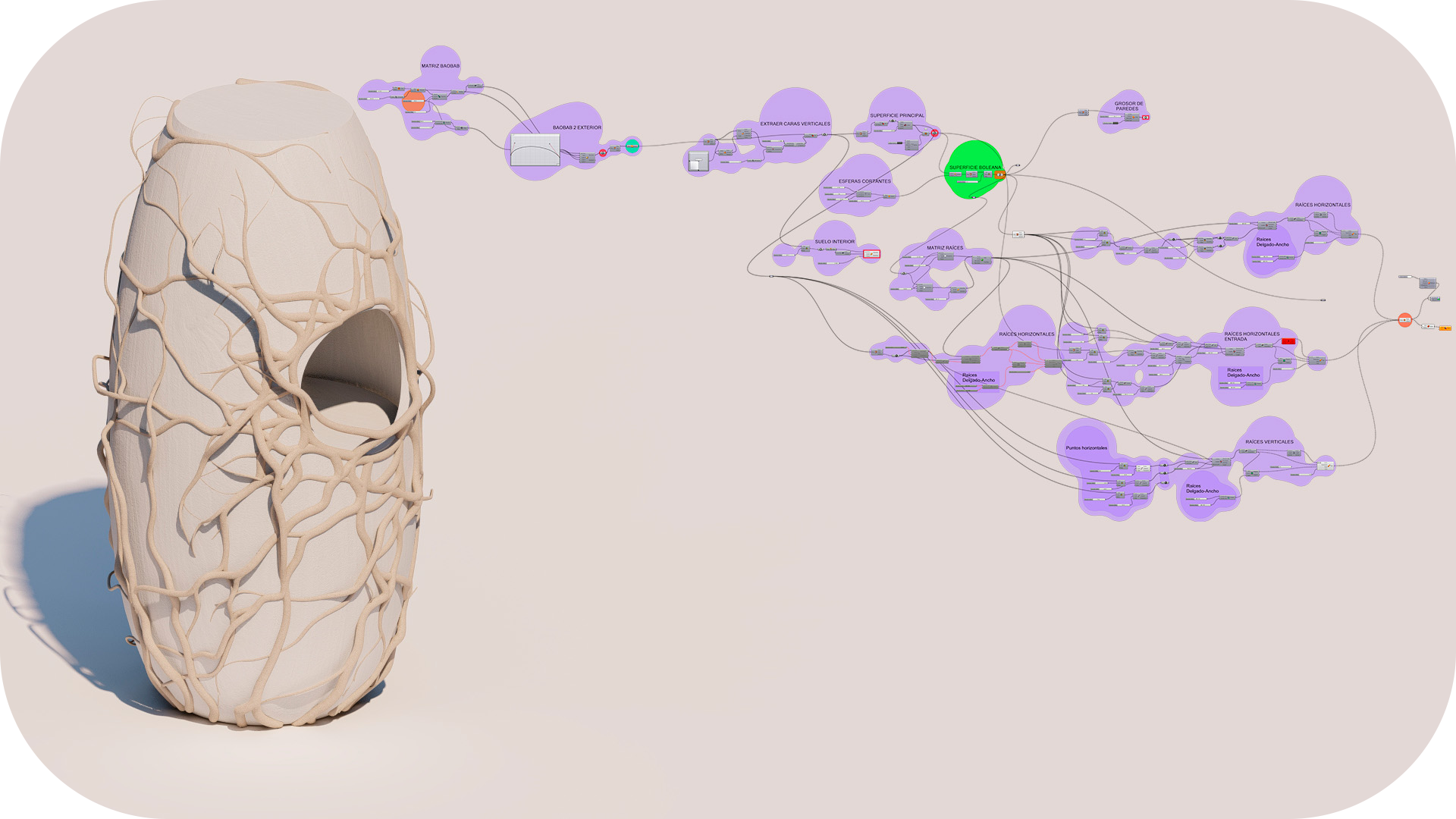
BAOBAB
Digital model developed in Grasshopper. The goal was to create a design inspired by African baobab trees, the iconic species of Madagascar.
The parametric definition aimed to generate a stable, scalable base form. Random points were distributed across the surface and then connected to produce an enveloping root-like system.
Three distinct root groups were formed: horizontal, vertical, and those emerging from the central void of the mass.
CONCEPT AND DEVELOPMENT
Baobab Shelter is a refuge designed for the lemurs of the Morelia Zoo, conceived as part of a master’s thesis focused on biomimetic design. The main goal was to integrate nature-inspired design principles to address the real needs of a non-human species, taking into account their behavior, physiology, and environment.
The baobab tree (Adansonia grandidieri) is endemic to Madagascar and deeply rooted in local culture as a symbol of resilience, wisdom, and home. In various Malagasy communities, these trees are considered sacred and are attributed protective and spiritual qualities. Their massive hollow trunks, capable of storing water during the dry season, have historically served as shelter for both animals and people. This multifunctional and symbolic nature was the conceptual starting point of the project.
The shelter’s form was developed specifically for lemurs, considering their anatomy, arboreal behavior, and the specific intervention site. Since these animals rarely seek refuge at ground level, an elevated inner void was created at a height of 1.40 meters to simulate their natural resting height, providing a protected and raised area from which they can observe their surroundings.
The digital model was developed in Grasshopper, starting from a base mass that emulates the trunk of a baobab tree. Random points were distributed across its surface and connected using a “shortest walk” algorithm, simulating the natural and efficient growth of roots. These roots, arranged in horizontal, vertical, and diagonal patterns, envelop the structure with a logic inspired by nature, combining functionality, structure, and formal language.
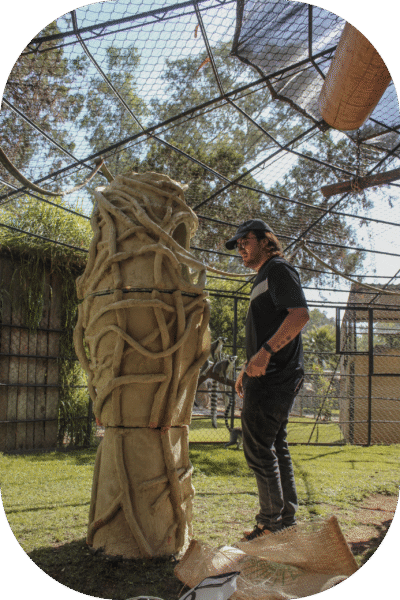
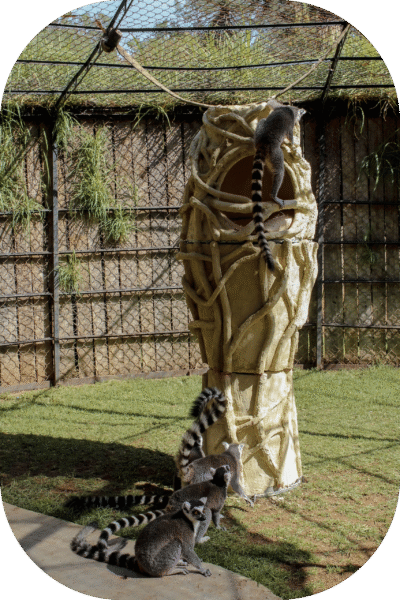
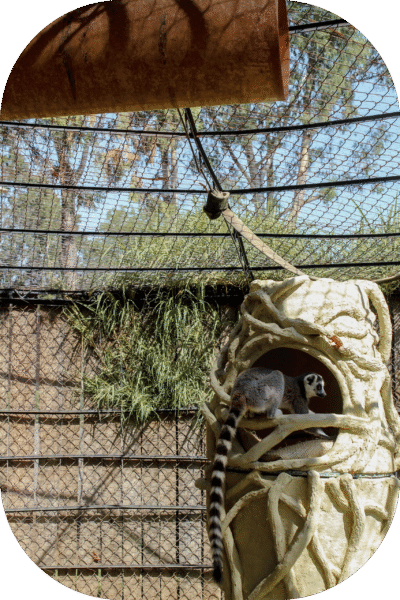
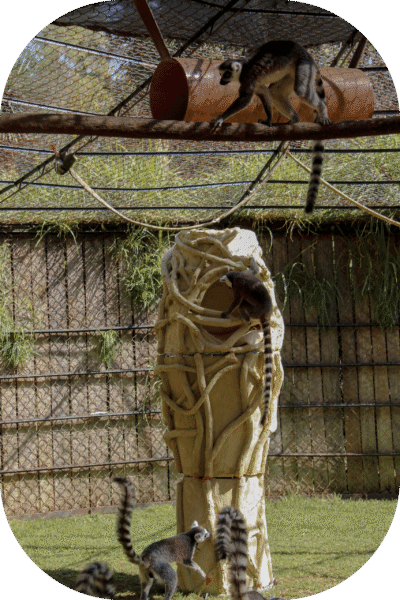
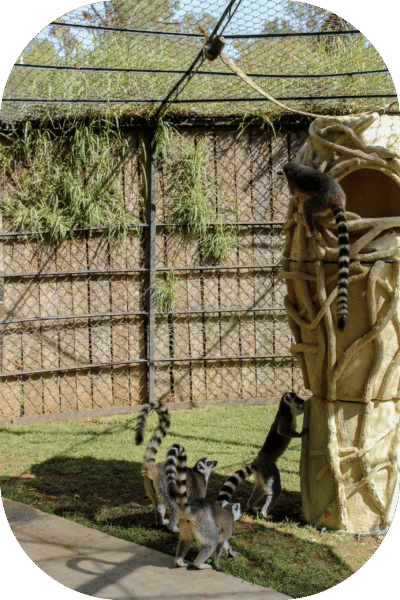
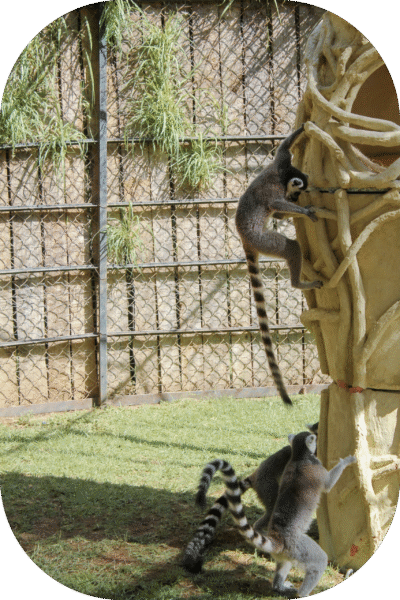
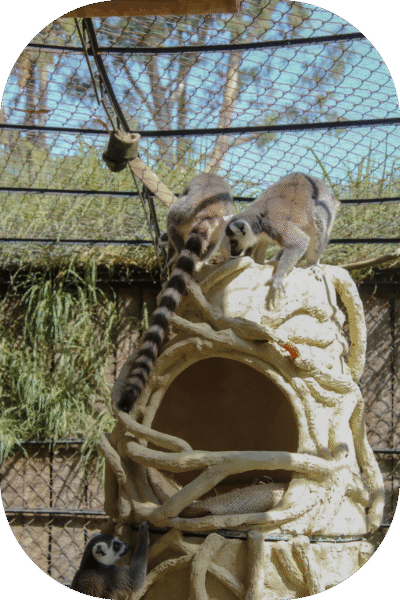
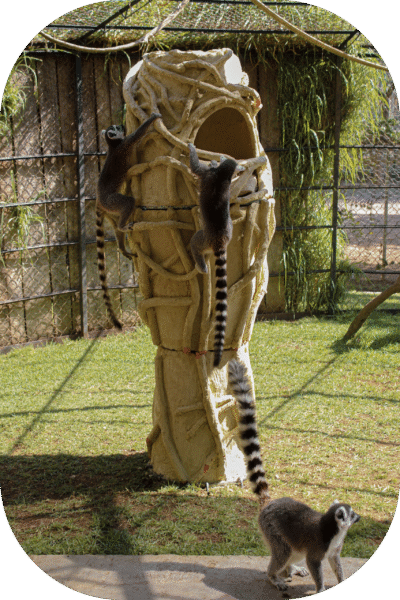
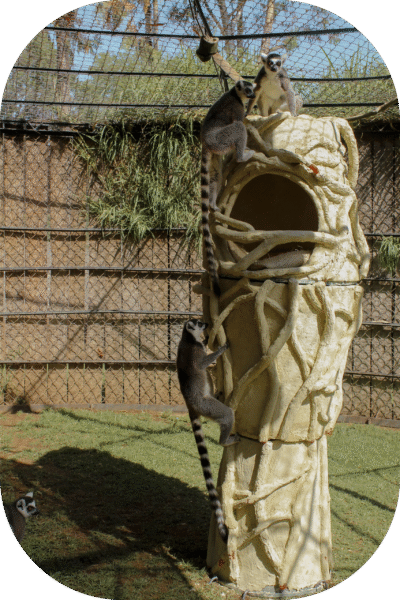
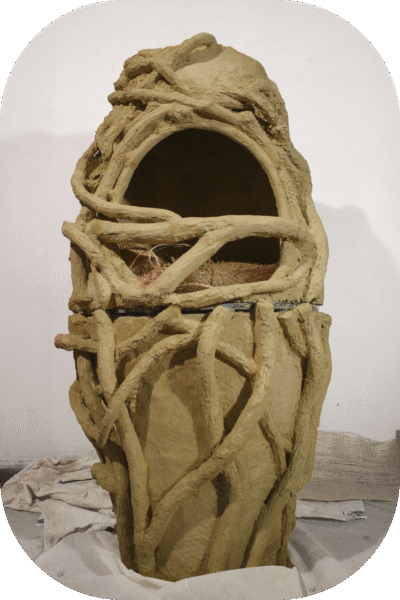
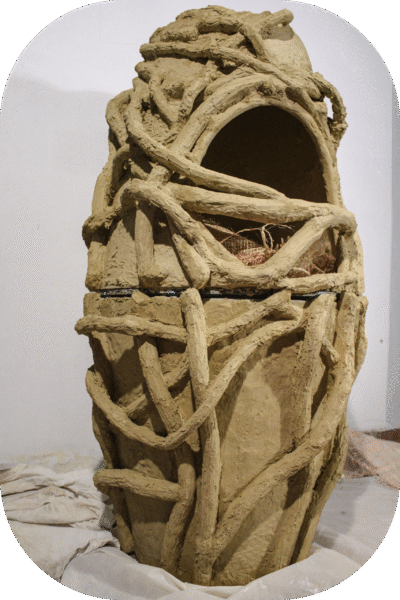
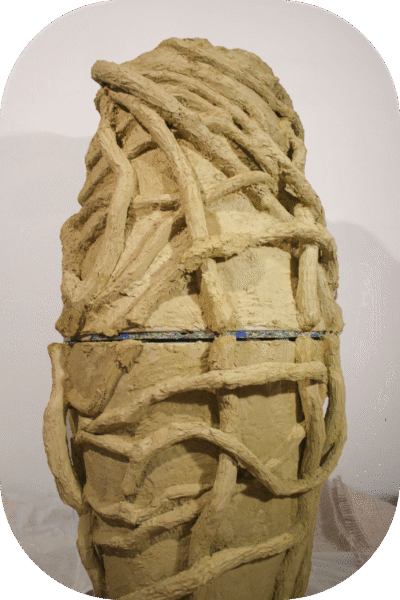
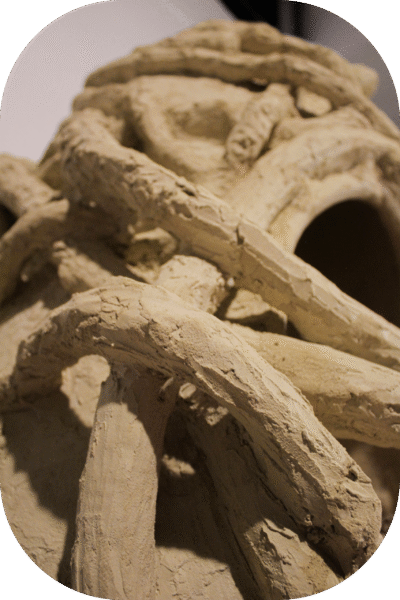
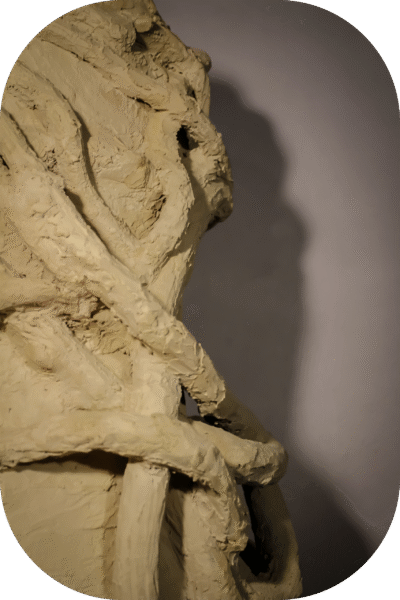
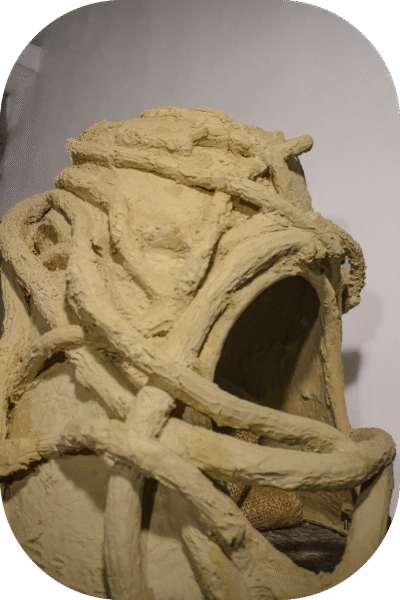
CONSTRUCTION AND IMPLEMENTATION
For its construction, accessible techniques and lightweight materials were prioritized to enable on-site fabrication using local resources. The base structure was composed of reused plastic pots, selected for their moisture resistance, light weight, and thermal properties. These were adapted and covered with chicken wire mesh to allow mortar anchoring.
The exterior finish was achieved using a manual mixture of white and gray cement, silica sand, and pigment, applied in layers to cover the plastic, protect the piece, and generate a rough surface with varied textures. This treatment not only reinforces the structure but also provides tactile and visual stimuli that promote environmental enrichment for the lemurs.
Currently, Baobab Shelter is installed in the lemur enclosure and is undergoing evaluation in collaboration with zoo specialists. The analysis will focus on how the animals interact with the piece and its influence on thermal comfort, behavior, and overall wellbeing of the species.
